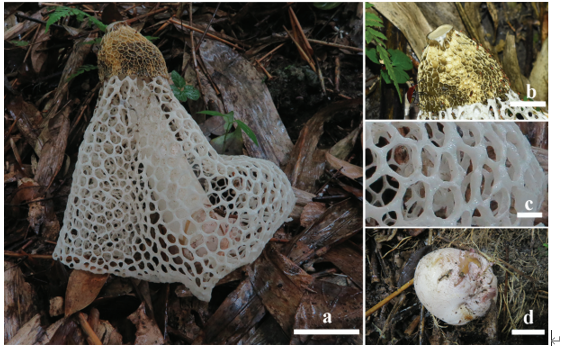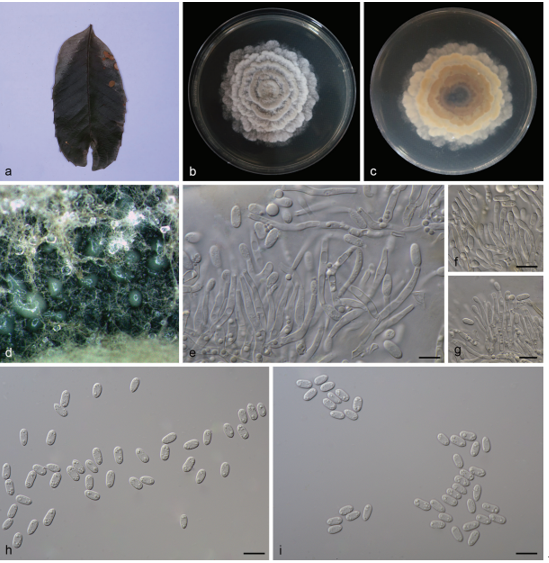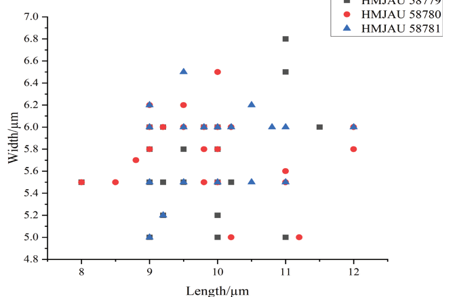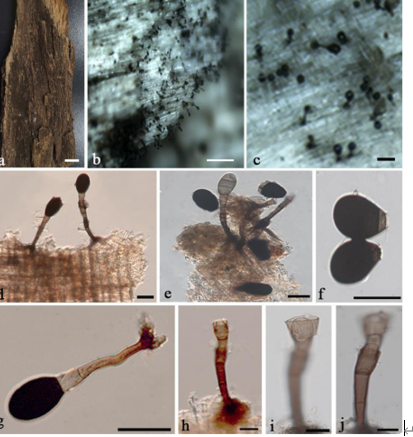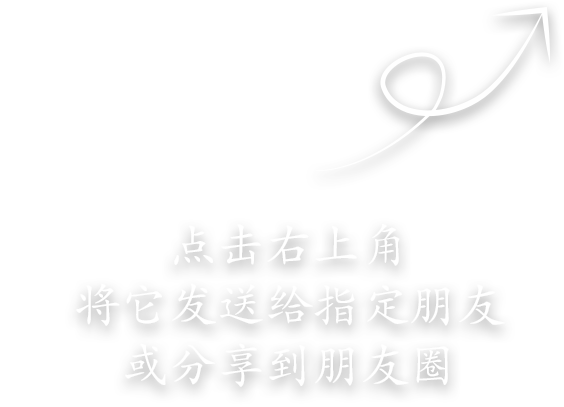Phanerochaete minor Y.L. Xu & S.H. He, sp. nov. 2020
MycoBank: MB 835450; Facesoffungi number: FoF 08027
Holotype China, Hainan Province, Baoting County, Qixianling Forest Park, on rotten monocots culm, 11 June 2016, He 3988 (BJFC 022490, holotype).
Morphological description
Fruiting body – Basidiomata annual, resupinate, effused, loosely adnate, easily detached from substrate, membranaceous, up to 15 cm long, 2 cm wide. Hymenophore smooth, light orange [6A(4–5)] to greyish orange [6B(3–6)], unchanged in KOH, uncracked or sparsely and minutely cracked with age; margin thinning out, fimbriate or indistinct, concolorous with hymenophore surface.
Microscopic structures – Hyphal system monomitic; generative hyphae mostly simple-septate, occasionally with single or double clamp connections. Subicular hyphae colorless, slightly thickwalled, moderately branched and septate, tightly interwoven, more or less parallel to substrate, 3–5 µm in diam. Cystidia (lamprocystidia) subcylindrical to subclavate, colorless, thick-walled, encrusted with crystals in the upper part, with a basal simple septum, occasionally with a secondary septum, projecting above the hymenium, 19–37 × 3–7 µm. Basidia clavate, colorless, thin-walled, with a basal simple septum and four sterigmata, 15–21 × 3–5 µm; basidioles numerous, similar to basidia but smaller. Basidiospores ellipsoid, colorless, thin-walled, smooth, IKI–, CB–, (3.5–) 4– 4.6 (–4.8) × 2–2.5 (–2.8) µm, L = 4.2 µm, W = 2.2 µm, Q = 1.9 (n = 30/1).
Habitat: on rotten monocots culm
Distribution: Hainan Province, southern tropical China.
GenBank Accession: ITS MT235686 nLSU MT248170\ MT248169 Literature This study\ This study
Notes: Phanerochaete minor is characterized by the light orange basidiomata on monocots, short lamprocystidia, and small basidiospores. In the phylogenetic tree, two samples of P. minor formed a lineage sister to P. cystidiata, which differs in having cream to light yellow basidiomata and longer thin-walled cystidia (40–60 μm, Wu et al. 2018a). A similar species, Phanerochaete flavidogrisea Sheng H. Wu has yellowish grey hymenophore, small basidiospores (3–3.8 × 2–2.8 μm), and lacks cystidia (Wu 1998). Phanerochaete eburnea Sheng H. Wu is similar to P. minor by sharing encrusted cystidia and small basidiospores, but differs in having ivory-colored hymenophore, longer cystidia (30–60 µm) and subglobose basidiospores (3.7–4.7 × 2.8–3.2 µm, Wu 1998).
.
Reference: Xu YL1 , Cao YF1 , Nakasone KK2 et al.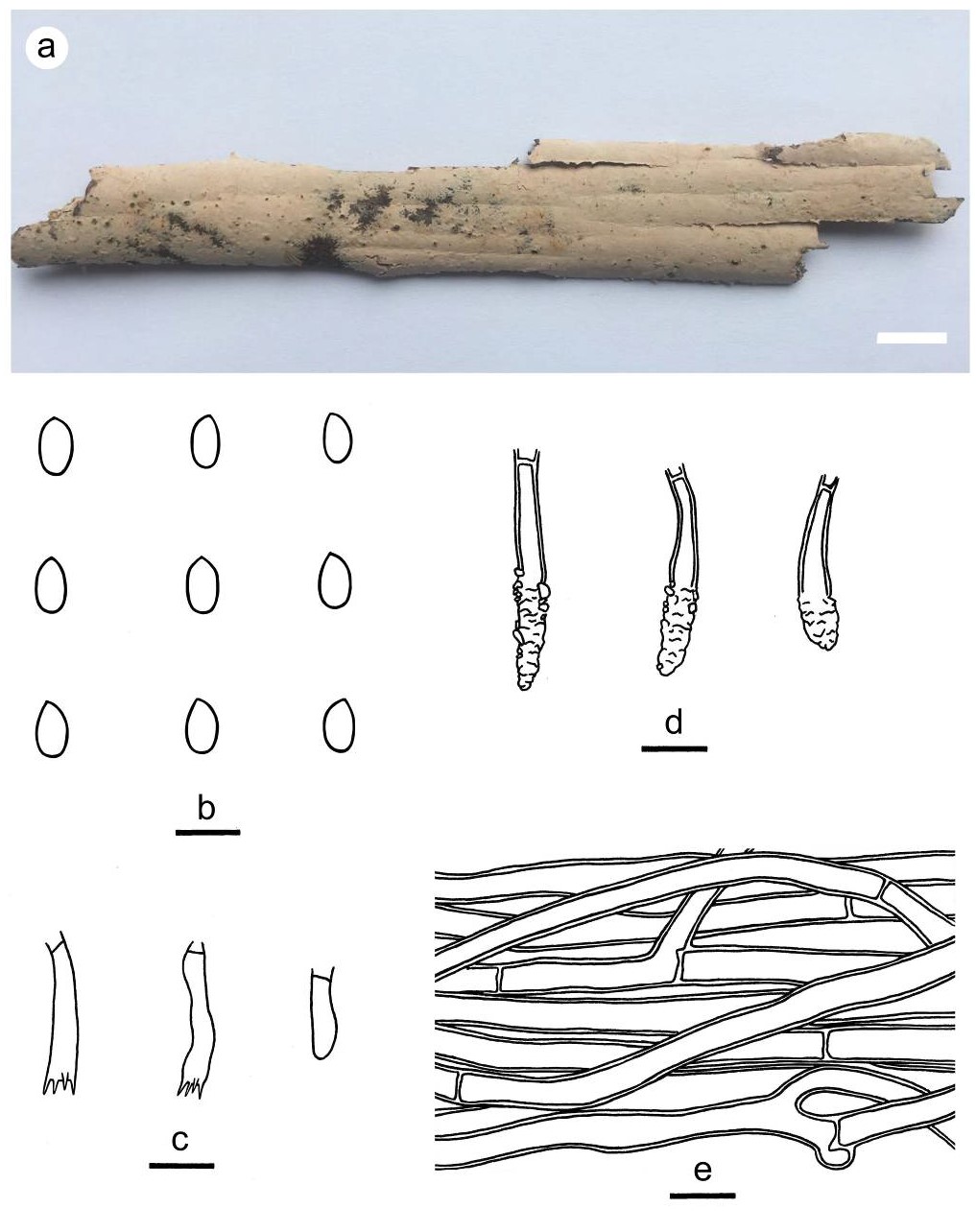
Figure 7 – Phanerochaete minor (from the holotype He 3988). a basidiomata. b basidiospores. c basidia and a basidiole. d cystidia. e hyphae from subiculum. Scale bars: a = 1 cm, b = 5 µm, c–e = 10 µm.


